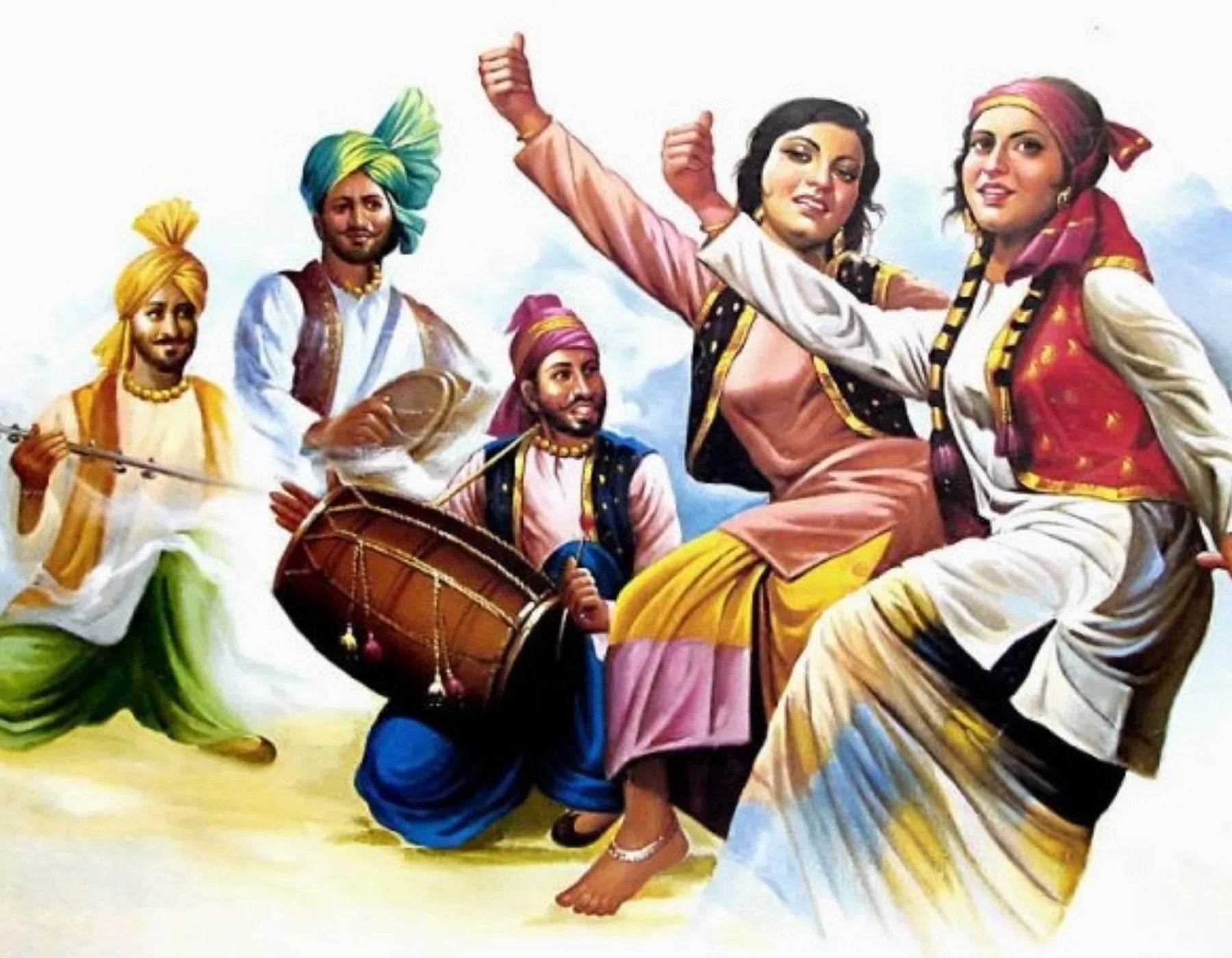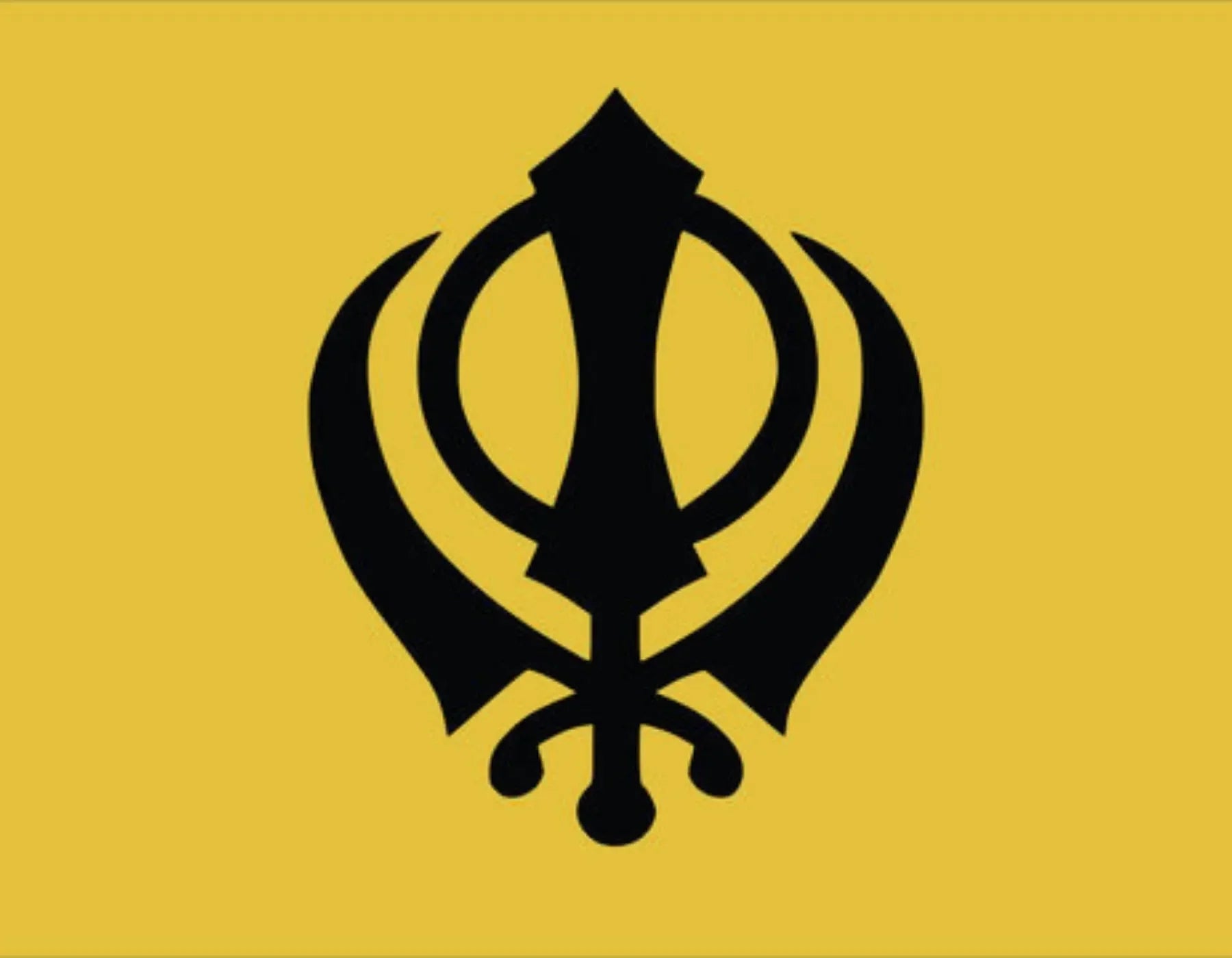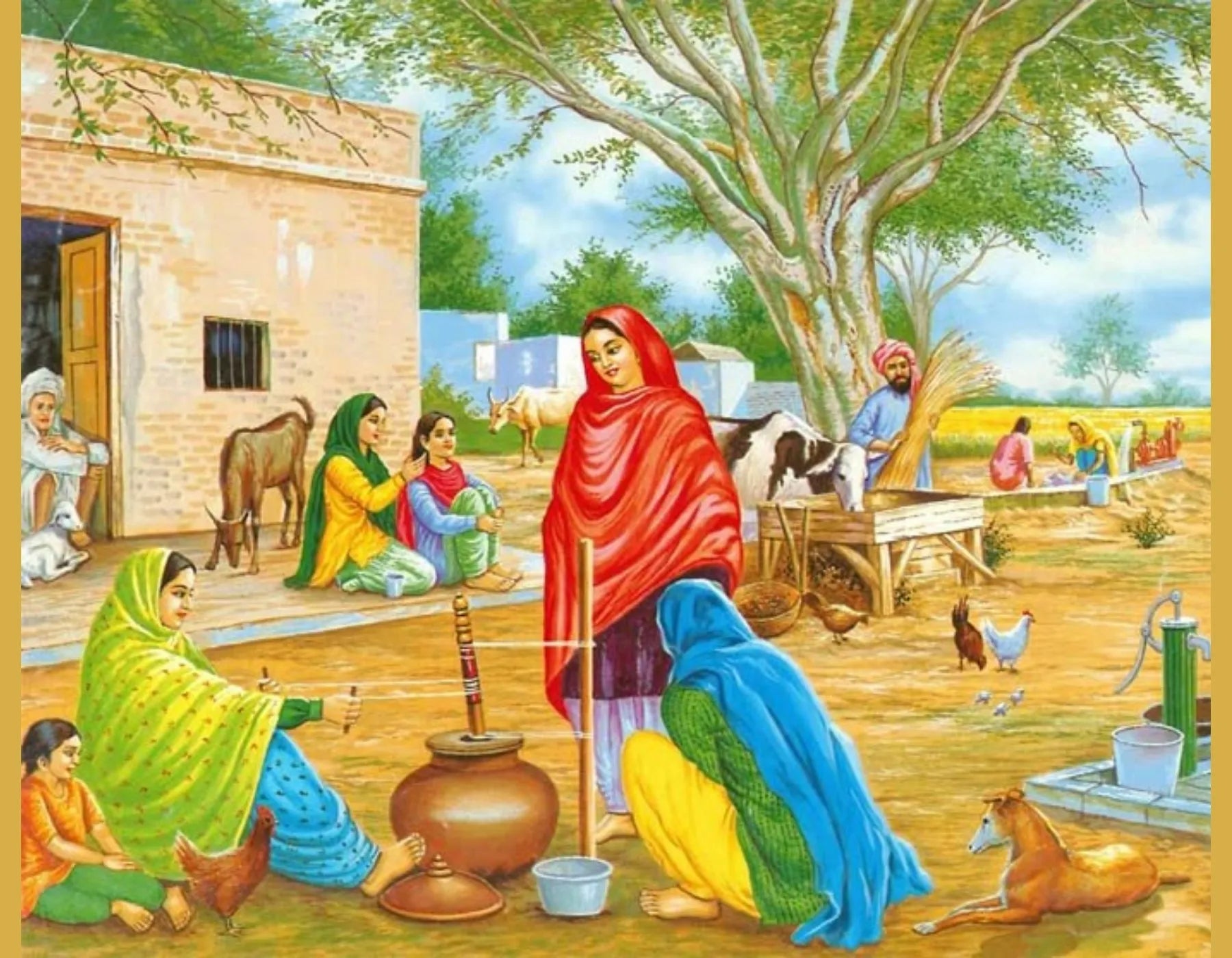
From Bhangra to Giddha: The Story Behind Punjab’s Dance Culture
The vibrant land of Punjab, known for its rich heritage, heartfelt music, and spirited community, has gifted the world with two iconic dance forms: Bhangra and Giddha. These traditional performances are not mere expressions of joy but powerful reflections of Punjab’s cultural identity, history, and social fabric. In this article, we delve deep into the origins, evolution, and cultural significance of these dance forms, exploring how they continue to thrive in modern times while preserving the pulse of Punjab’s past.
The Origins of Bhangra: A Harvest Dance of Celebration
Bhangra finds its roots in the agrarian traditions of Punjab. Originally performed by farmers to celebrate the harvest festival of Vaisakhi, Bhangra was an embodiment of gratitude toward nature and hard-earned prosperity. Dancers would gather in open fields, clad in bright turbans and kurtas, moving rhythmically to the beat of the dhol, a double-sided drum that remains central to the dance’s explosive energy.
What began as a seasonal dance gradually transformed into a cultural phenomenon. The lyrics of Bhangra songs historically narrated tales of valour, love, and daily rural life, capturing the ethos of the Punjabi people. The powerful footwork, high jumps, and dynamic movements mirrored the strength and resilience required in farming life.

Giddha: The Feminine Echo of Tradition and Expression
While Bhangra reflected masculine strength, Giddha emerged as a graceful yet spirited expression of Punjabi women. Performed during festivals, weddings, and community gatherings, Giddha allowed women to celebrate, criticize, and connect through lively movements and poetic expression.
The core of Giddha lies in the boliyan—short, satirical, or emotional couplets sung in rhythm. These lyrical exchanges form the heart of the performance, addressing everything from married life to societal norms, often with a humorous twist. Women in vibrant salwar suits adorned with jewelry clap, sway, and spin in a circular formation, creating a captivating spectacle of unity and storytelling.
Giddha was and remains a safe space for female voices, allowing them to share experiences, joys, and grievances within a communal setup that celebrated solidarity.

The Instruments That Define the Rhythm
No discussion of Punjabi dance culture is complete without highlighting the traditional instruments that breathe life into these performances:
-
Dhol: A thunderous drum central to Bhangra, producing electrifying beats that drive the dance’s tempo.
-
Chimta: Metal tongs with jingling discs, often used to maintain rhythmic balance.
-
Algoza: A double-flute played simultaneously, often found in traditional Giddha.
-
Tumbi: A high-pitched, single-stringed instrument, iconic in Punjabi folk music.
These instruments do not merely accompany the dance; they shape its identity. Their sounds are deeply embedded in the auditory landscape of Punjab and instantly evoke feelings of celebration and pride.
Dance as a Social Commentary and Cultural Preservation
Both Bhangra and Giddha go beyond performance—they serve as mirrors of Punjabi society. Through lyrics and movement, these dances have historically communicated issues like colonial resistance, love and longing, gender roles, and social justice. During the British colonial period, folk dances became subtle tools of resistance and identity preservation.
Giddha, in particular, has allowed generations of women to preserve oral traditions. Passed down through storytelling and performance, these dances are living archives of Punjabi dialects, proverbs, and folk wisdom.
Modern Revival and Global Recognition
The rise of Punjabi diaspora communities in countries like Canada, the UK, and the United States has led to a powerful global resurgence of Bhangra and Giddha. Today, Punjabi dance teams in universities and international competitions showcase modern choreographies while remaining rooted in tradition.
Fusion performances, blending Bhangra with hip-hop, reggae, or electronic music, have introduced global audiences to the energetic flair of Punjabi rhythm. Films, music videos, and international concerts have elevated Bhangra and Giddha to pop culture phenomena.
In India, Giddha is being revived through school competitions and cultural festivals that highlight its feminist undertones and cultural depth. Simultaneously, global Bhangra competitions like the World Bhangra Competition and Bhangra Blowout have become platforms for innovation and cultural pride.
Costumes: The Visual Identity of Dance
Costumes in Punjabi dance are more than attire—they are symbols of regional pride and personal identity.
Bhangra Attire Includes:
-
Kurta and lungi or chaadra (a type of loincloth)
-
Turban (pag) with a turla (a fan-like extension)
-
Phuman (decorative tassels worn on arms)
Giddha Costumes Include:
-
Salwar kameez with heavy dupattas
-
Paranda (colorful braided hair accessory)
-
Jewelry like jhumkas, bangles, and nose rings
These colorful ensembles are designed not just for aesthetics, but also to enhance movement and express vibrancy, femininity, and masculinity through fabric and color.

Dance and Identity Among Punjabi Youth
For today’s Punjabi youth—whether in villages or diaspora hubs—Bhangra and Giddha have become vehicles for identity exploration. Through participation in dance teams or social media showcases, they connect with their heritage while asserting their modern selves.
TikTok trends, Instagram reels, and YouTube dance challenges featuring Bhangra have garnered millions of views, turning Punjabi dance into a digital bridge between generations. These platforms allow for experimentation while maintaining a cultural throughline to their ancestors’ traditions.
In schools and cultural institutions, dance is often part of heritage education, fostering pride in Punjabi roots and helping youth articulate their bicultural identities.
The Future of Punjab’s Dance Legacy
With increasing efforts toward cultural documentation, curriculum inclusion, and cross-cultural exchange, Bhangra and Giddha are well-positioned to thrive in the digital age. More than entertainment, they are seen as living legacies—breathing reminders of Punjab’s historical journey and enduring soul.
As both a celebration of joy and a form of cultural resistance, these dances hold immense potential to unify, inspire, and educate across borders. Whether performed on dusty village grounds or global stages, Bhangra and Giddha continue to echo the heartbeat of Punjab—resilient, radiant, and eternally rhythmic.


